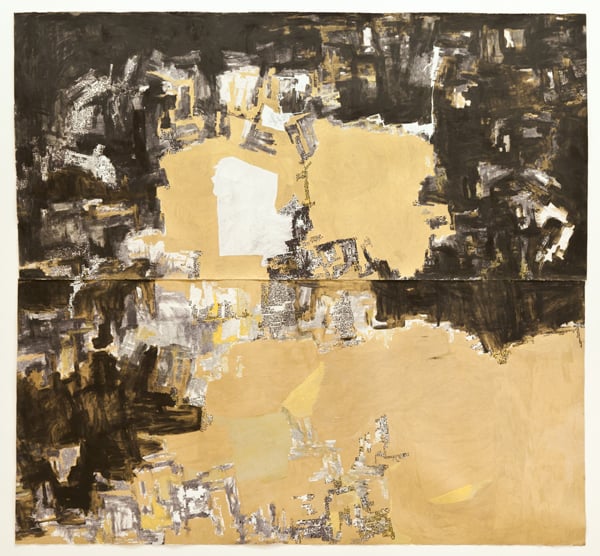
Caitlin Masley
Photo courtesy of Artcards.cc.
Caitlin Masley is a painter and sculptor. Taking on design and its relationship to nature, she is entranced by the confrontation between old and new, and systems in crisis. In her work, she takes inspiration from the postwar Japanese architectural movement called “Metabolism,” Brutalist architecture, and the evocative design work of Lebbeus Woods. She holds an MFA from the University of Arizona, and an MS in design and urban ecology from Parsons/The New School. She has been artist-in-residence at foundations and schools in Switzerland, Norway, Germany, Quebec, and Austria. Her work has been exhibited internationally, including at MoMA PS1, Lu Magnus gallery in New York, and Golden Parachutes in Berlin. Masley lives and works in Brooklyn.
When did you know you wanted to be an artist?
My grandfather was an artist; he was well known for his woodcuts. I spent quite a bit of time in his studio as a small child with huge rolls of paper and whatever pens and pencils he gave me to use. I took art classes when I was a bit older from this fiery red-headed Irish woman, whose drawing skills were phenomenal. I have carried these experiences within me through my life, exploring mark-making and using my hand to see what my brain is thinking. When I was in high school, my father and I had a conversation about sustaining a life as an artist. It made me think in depth about what that might look like, and, when I went to college, I went to explore other interests in architecture and science, but I just couldn’t get away from art-making, and finally fully gave in and moved to New York, and then started traveling the world to make work.
Caitlin Masley, Untitled (black and gold on white) (2008)
Photo courtesy of the artist and Lu Magnus.
What inspires you?
I have a long-standing obsession with Brutalist architecture, Spomeniks, the work of architect Lebbeus Woods, as well as the postwar Japanese architectural movement Metabolism—all of which confront us with explorations of design systems in crisis, the confrontation of the order of the existing by the new, and the fusing of ideas about megastructures with those of organic biological growth. I am interested in taking this vocabulary and deconstructing the tensions between the modernist idealism embedded in these architectures and the inherent geological/geopolitical impermanence. The structures, places, and futures that we create and also abandon, as well as how we mark the land or leave topographic traces on the world, tells our histories. To me, what we build as a human race is more of a portrait of humans than portraiture itself.
Caitlin Masley, Unbuilt (framed) (2010)
Photo courtesy of the artist and Lu Magnus.
If you could own any work of modern or contemporary art, what would it be?
The one that I do own! A Le Corbusier print my father gave me called UNITE. I look at it all the time, and am completely drawn to the bold lines and outlined structures that are very Le Corbusier, but the composition seems as if it is in a moment before so many of these shapes collide. The emotion that is contained within the odd geometry fascinates me and the bold mark-making is stunning.
Le Corbusier, UNITE
Photo courtesy of Caitlin Masley.
What are you working on at the moment?
I just installed a show of my drawings form the last several years entitled “DECONSTRUCTED REVISIONISMS (the places I can’t see with my own eyes).” It looks closely at my drawing practice as an embodied negotiation of geopolitical space. While working mostly with reference to distinct architectural structures and urban topographies, each drawing series is organized around an examination of a specific place in a specific moment in history, and is often a way for me to deconstruct a political situation and/or breach a physical boundary without the firsthand experience. This projecting into often far-away situations is guided by an exhaustive archive of images that I culled from political media outlets, online databases, and personal photos from disputed territories, abandoned cities, and social structural projects from around the world or shared with me by friends that traveled to countries in conflict (Sean Hemmerle being one of them). I have an obsessive treatment of surface space, as I look to meticulously hand-record every block, passageway, and texture, allowing me to to dig back into the organic matter of these topographies. Visually referencing Landsat imagery, historical satellite imagery, and urban futures, my use of metallics has a material significance that conjures mineral deposits found in the earth. The act of layering and subtracting fractions of various structures in my drawings lets the works collectively record the invisible history of where we go, where we live, how we make, erase, and redraw borders and structures.
When not making art, what do you like to do?
Read science fiction.